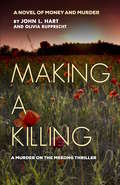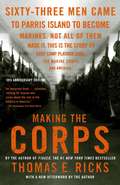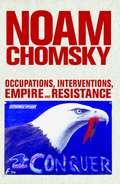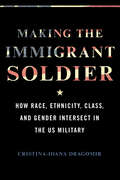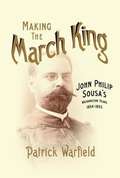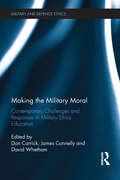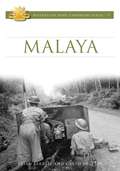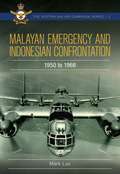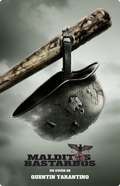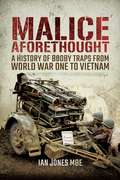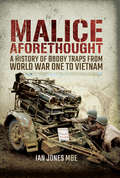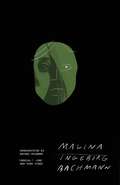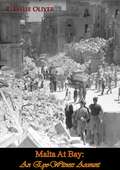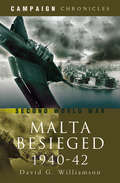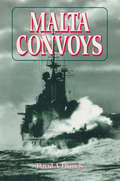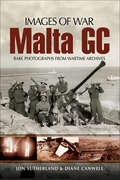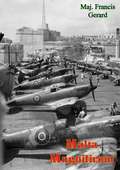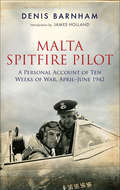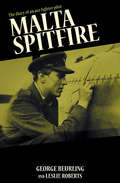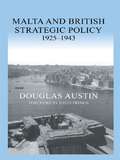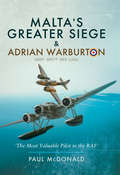- Table View
- List View
Making a Killing
by John L. Hart Olvia RupprechtThe CIA's most valuable assassin, Agent J.D. Mikel, wasn't supposed to fall in love with anyone - especially not Kate Morningside, a woman coveted by another powerful world player. When Kate is kidnapped, J.D. is pulled into a dangerous game of cat and mouse, and one false move could cost him everything. Indeed, there are players - and then there are the masters who make the rules only to break them. It's not an even match for those joining an epic search for Kate on a twisted dark hunt down the Mekong River in the midst of a bitterly disputed war: Izzy, a brilliant young psychiatrist assigned to the Army's 8th Field Hospital and counting the days until he can return home; and his best friend Gregg, a gifted psychologist who served his time only to be driven back to Vietnam by his own inner demons and a rivalry with Mikel that burns as intensely as napalm. There are other wars within wars in turbulent 1970. From the CIA to the American mafia to an International cartel helmed by a master of the sadistic, all eyes are on Southeast Asia's Golden Triangle. And when it comes to a certain cash crop flourishing under the dominion of the mysterious Poppy King, everyone wants a piece of the action. Money talks. The currency? Heroin. It's a spinning maze of intrigue, politics, and mind games; a hotbed where sex, drugs, and Janis Joplin aren't always a beautiful thing. But even when no one turns out to be quite who or what they seem, one rule remains fast across the Devil's chessboard: Winners live. Losers die. The sequel to the national bestseller THERE WILL BE KILLING, MAKING A KILLING artfully weaves a spellbinding tapestry of dark history, psychology, and seduction - the best and worst of our humanity . . . and the hunger of our hearts. PRAISE FOR THERE WILL BE KILLING: "A riveting journey into the perils of war and the darkness of the human heart - stylish and provocative." - Tara Janzen, New York Times bestselling author "There Will Be Killing is mesmerizing...a chilling and astonishing novel by authors who know their way around a story." - Peggy Webb, USA Today bestselling author of The Language of Silence "Make sure you have some time to spend because you won't want to put it down until you turn the last page." - Book Bug
Making the Corps: 61 Men Came to Parris Island to Become Marines
by Thomas E. RicksThe United States Marine Corps, with its proud tradition of excellence in combat, its hallowed rituals, and its unbending code of honor, is part of the fabric of American myth. Making the Corps visits the front lines of boot camp in Parris Island, South Carolina. Here, old values are stripped away and new Marine Corps values are forged. Bestselling author Thomas E. Ricks follows these men from their hometowns, through boot camp and into their first year as Marines. As three fierce drill instructors fight a battle for the hearts and minds of this unforgettable group of young men, a larger picture emerges, brilliantly painted, of the growing gulf that divides the military from the rest of America. Included in this edition is an all-new afterword from the author that examines the war in Iraq through the lens of the Marines from Platoon 3086, giving readers an on-the-ground view of the conflict from those who know it best
Making the Future: Occupations, Interventions, Empire and Resistance
by Noam ChomskyMaking the Future presents more than fifty concise and persuasively argued commentaries on U.S. politics and policies, written between 2007 and 2011. Taken together, Chomsky's essays present a powerful counter-narrative to official accounts of the major political events of the past four years: the wars in Afghanistan and Iraq; the U.S. presidential race; the ascendancy of China; Latin America's leftward turn; the threat of nuclear proliferation in Iran and North Korea; Israel's invasion of Gaza and expansion of settlements in Jerusalem and the West Bank; developments in climate change; the world financial crisis; the Arab Spring; the assassination of Osama bin Laden; and the Occupy protests. Laced throughout his critiques are expressions of commitment to democracy and the power of popular struggles. "Progressive legislation and social welfare," writes Chomsky, "have been won by popular struggles, not gifts from above. Those struggles follow a cycle of success and setback. They must be waged every day, not just once every four years, always with the goal of creating a genuinely responsive democratic society, from the voting booth to the workplace." Making the Future is a follow-up to Interventions, published by City Lights in 2007 and banned from Guantánamo Bay by U.S. military censors. Both books are drawn from articles Chomsky has been writing regularly for the New York Times Syndicate, but which go largely ignored by newspapers in the United States. Making the Future offers fierce, accessible, timely, gloves-off political writing by one of America's foremost intellectual and political dissidents.
Making the Immigrant Soldier: How Race, Ethnicity, Class, and Gender Intersect in the US Military
by Cristina-Ioana DragomirImmigrants to the United States have long used the armed forces as a shortcut to citizenship. Cristina-Ioana Dragomir profiles Lily, Alexa, and Vikrant, three immigrants of varying nationalities and backgrounds who chose military service as their way of becoming American citizens. Privileging the trio’s own words and experiences, Dragomir crafts a human-focused narrative that moves from their lives in their home countries and decisions to join the military to their fraught naturalization processes within the service. Dragomir illuminates how race, ethnicity, class, and gender impacted their transformation from immigrant to soldier, veteran, and American. She explores how these factors both eased their journeys and created obstacles that complicated their access to healthcare, education, economic resources, and other forms of social justice. A compelling union of analysis and rich storytelling, Making the Immigrant Soldier traces the complexities of serving in the military in order to pursue the American dream.
Making the March King: John Philip Sousa's Washington Years, 1854-1893
by Patrick WarfieldJohn Philip Sousa's mature career as the indomitable leader of his own touring band is well known, but the years leading up to his emergence as a celebrity have escaped serious attention. In this revealing biography, Patrick Warfield explains the making of the March King by documenting Sousa's early life and career. Covering the period 1854 to 1893, this study focuses on the community and training that created Sousa, exploring the musical life of late nineteenth-century Washington, D.C., and Philadelphia as a context for Sousa's development. Warfield examines Sousa's wide-ranging experience composing, conducting, and performing in the theater, opera house, concert hall, and salons, as well as his leadership of the United States Marine Band and the later Sousa Band, early twentieth-century America's most famous and successful ensemble. Sousa composed not only marches during this period but also parlor, minstrel, and art songs; parade, concert, and medley marches; schottisches, waltzes, and polkas; and incidental music, operettas, and descriptive pieces. Warfield's examination of Sousa's output reveals a versatile composer much broader in stylistic range than the bandmaster extraordinaire remembered as the March King. Warfield presents the story of Sousa as a self-made business success, a gifted performer and composer who deftly capitalized on his talents to create one of the most entertaining, enduring figures in American music.
Making the Military Moral: Contemporary Challenges and Responses in Military Ethics Education (Military and Defence Ethics)
by Don Carrick, James Connelly and David WhethamThis book offers a critical analysis, both theoretical and practical, of ethics education in the military. In the twenty-first century, it has become increasingly important to ensure that the armed forces of Western and other democracies fight justly and behave ethically. The ‘good soldier’ has to be not only professionally skilled but morally intelligent. At a time of relentless media scrutiny, the publicising of incidents of morally and legally unacceptable behaviour, such as the gross mistreatment of prisoners and the torture of suspected terrorists, can do much to undermine the credibility of those who claim to hold the moral high ground in any particular conflict. Written by an international team of academic theorists and military practitioners, this volume provides inter-disciplinary insights into the present state, and the future, of ethics education in the militaries of Western democracies. The contributors critically address the central question of whether such education is sufficient to prepare members of the armed forces to face the peculiar challenges of conflict environments that are now primarily ‘wars among the people’, in which the opposing combatants may have little or no regard for human life and fail to discriminate between soldiers and civilians when choosing their targets. Drawing lessons from recent examples of unethical conduct, this original book offers insightful and constructive advice, both theoretical and practical, as to how situations can be improved and on the means that could and should be employed towards this end. This book will be of much interest to students of military studies, ethics and international relations.
Making the Soldier Decisive on Future Battlefields
by Division On Engineering Physical SciencesThe U. S. military does not believe its soldiers, sailors, airmen, and marines should be engaged in combat with adversaries on a "level playing field. " Our combat individuals enter engagements to win. To that end, the United States has used its technical prowess and industrial capability to develop decisive weapons that overmatch those of potential enemies. In its current engagement--what has been identified as an "era of persistent conflict"-- the nation's most important weapon is the dismounted soldier operating in small units. Today's soldier must be prepared to contend with both regular and irregular adversaries. Results in Iraq and Afghanistan show that, while the U. S. soldier is a formidable fighter, the contemporary suite of equipment and support does not afford the same high degree of overmatch capability exhibited by large weapons platforms--yet it is the soldier who ultimately will play the decisive role in restoring stability. Making the Soldier Decisive on Future Battlefields establishes the technical requirements for overmatch capability for dismounted soldiers operating individually or in small units. It prescribes technological and organizational capabilities needed to make the dismounted soldier a decisive weapon in a changing, uncertain, and complex future environment and provides the Army with 15 recommendations on how to focus its efforts to enable the soldier and tactical small unit (TSU) to achieve overmatch.
Malaya 1942 (Australian Army Campaigns Series #5)
by Brian Farrell Gareth PrattenWhen Imperial Japan unleashed the Pacific War in December 1941, Australian forces went into action, as part of a larger British Empire force, to defend Malaya and Singapore. Australia's principal contribution to defending Malaya and Singapore was the 8th Division. Originally raised for service in the Mediterranean, the division was committed piecemeal to Malaya and its performance was bedevilled by poor command decisions in the face of an enemy better prepared on all counts for the campaign at hand. The 8th Division, however, also reflected some strengths of the AIF at large: stubbornness in positional defence, effective and flexible small unit tactics and leadership, and skill and determination in close quarter combat. Singapore was lost more in spite than because of Australian efforts, but its loss underlined Australia's strategic dependence on `great and powerful friends' during the Second World War.
Malayan Emergency and Indonesian Confrontation: 1950-1966
by Mark LaxAustralia&’s involvement in the Malayan Emergency from 1950 to 1960 and later in a confrontation with Indonesia in the 1960s is little remembered today. Yet the deployment of over a third of the RAAF to support the British and Malayan governments in what became a long war of attrition against communist insurgents in the former case, and against Indonesian regulars and militia in the latter, kept the RAAF engaged for over 15 years. Wars by another name, these two events led to the birth of Malaysia and the establishment of an ongoing RAAF presence in South East Asia. Until recent operations in Afghanistan, the Malaya Emergency was Australia&’s longest conflict. Malayan Emergency and Indonesian Confrontation recounts the story of the politics, strategies and operations that brought these two conflicts to a close.
Malditos Bastardos
by Quentin TarantinoDurante la II Guerra Mundial, un pelotón de soldados judíoamericanos conocidos como «Los Bastardos» son seleccionados para sembrar el terror a lo largo y ancho del Tercer Reich. Su misión: asesinar tantos nazis como puedan. Sus métodos: todo está permitido. Todo es válido. Ojo por ojo, diente por diente. Hitler no sabe lo que le espera.
Malice Aforethought: A History of Booby Traps from the First World War to Vietnam
by Ian JonesWar has always provided a stimulus to technological development, and throughout the twentieth century this new technology was harnessed to produce increasingly deadly and malicious types of explosives in the form of booby traps, mines, delayed-action devices and mobile charges. Designed, constructed or adopted to kill or injure, these lethal mechanisms function when a person disturbs or approaches a seemingly harmless object or performs an apparently safe act. In other instances they are set off by remote control or automatically after a lapse of time. Fully illustrated with diagrams and photographs, Malice Aforethought traces the design, deployment and effectiveness of these deadly devices throughout both world wars to the Vietnam War. Expertly and compellingly written, this unique study is a tribute to the brave men who risked their lives daily to neutralise the booby traps laid in the dimly lit dugouts of the Western Front, on the beaches of Normandy, or in the dark and dangerous tunnels of Chu Chi.
Malice Aforethought: A History of Booby Traps from the First World War to Vietnam
by Ian JonesAn examination of the uses of explosive traps in a military context and the measures that have been taken to negate their effects and to neutralize them. War has always provided a stimulus to technological development, and throughout the twentieth century this new technology was harnessed to produce increasingly deadly and malicious types of explosives in the form of booby traps, mines, delayed-action devices and mobile charges. Designed, constructed or adopted to kill or injure, these lethal mechanisms function when a person disturbs or approaches a seemingly harmless object or performs an apparently safe act. In other instances they are set off by remote control or automatically after a lapse of time. Fully illustrated with diagrams and photographs, Malice Aforethought traces the design, deployment and effectiveness of these deadly devices throughout both world wars to the Vietnam War. Expertly and compellingly written, this unique study is a tribute to the brave men who risked their lives daily to neutralize the booby traps laid in the dimly lit dugouts of the Western Front, on the beaches of Normandy, or in the dark and dangerous tunnels of Chu Chi.
Malina (Les\millors Obres De La Literatura Universal Ser. #Vol. 143)
by Ingeborg BachmannNow a New Directions book, the legendary novel that is “equal to the best of Virginia Woolf and Samuel Beckett” (New York Times Book Review) Malina invites the reader on a linguistic journey, into a world that stretches the very limits of language with Wittgensteinian zeal and Joycean inventiveness, where Ingeborg Bachmann ventriloquizes—and in the process demolishes—Proust, Musil, and Balzac, and yet filters everything through her own utterly singular idiom. Malina is, quite simply, unlike anything else; it’s a masterpiece. In Malina, Bachmann uses the intertwined lives of three characters to explore the roots of society’s breakdown that lead to fascism, and in Bachmann’s own words, “it doesn’t start with the first bombs that are dropped; it doesn’t start with the terror that can be written about in every newspaper. It starts with relationships between people. Fascism is the first thing in the relationship between a man and a woman, and I attempted to say that here in this society there is always war. There isn’t war and peace, there’s only war.”
Malta At Bay: An Eye-Witness Account
by R. Leslie OliverIn this detailed eye-witness account the author describes the realities of the fighting over and around Malta during World War II, up to and including 21 March 1942, when Malta became the subject of more heavy attacks. Written under the incessant bombardments that the small island was subjected to, R. Leslie Oliver records the unfailing courage of the defenders of the George Cross Island.
Malta Besieged, 1940–1942: Second World War (Campaign Chronicles)
by David G. WilliamsonThis WWII military study sheds new light on the legendary Siege of Malta, combining a detailed narrative with provocative strategic analysis. The heroic defense of Malta against the Axis powers is one of the most famous episodes of the Second World War. For more than two years this tiny island was the critical to maintaining control of the Mediterranean and essential to the outcome of the North African campaign. David Williamson, in this thought-provoking reassessment, examines the strategy underpinning British determination to hold on to the island. Expertly researched and vividly detailed, Malta Besieged sheds new light on the motives for persisting with such a costly defense against huge odds. he also explores the question of the islanders&’ loyalty to the British crown. His incisive analysis takes account of the tactics employed by both sides, the political thinking and decision-making at the highest levels and the grim reality of the destruction and suffering on the ground.
Malta Convoys: The Struggle at Sea
by David A. ThomasIn Malta Convoys David Thomas, the distinguished naval historian, gives a fascinating account of the vital battles fought by sea and air to ensure that essential supplies got through. He vividly describes the appalling cost in men and ships. Here is an important contribution to naval history in the Second World War and, at the same time, a rattling good read.
Malta GC: Rare Photographs From Wartime Archives (Images Of War Bks.)
by Jon SutherlandThe Siege of Malta during World War II was one of the greatest dramas of the conflict. Bereft of vital defending aircraft, guns and ammunition this small island endured a succession of air raids from the Italian and German air forces. Valetta was virtually destroyed, the inhabitants took to living in the hills and caves as their houses lay in ruins. Food was scarce and the islands only salvation and survival depended on the arrival of the Allied convoys which themselves were constantly under attack as they dodged their way across hostile Mediterranean seas. This book contains unseen photographs taken during the siege and dramatically show what life was like for the population and the troops and pilots who so valiantly defended Malta.
Malta Magnificent
by Maj. Francis GerardMalta Magnificent, written by Major Francis Gerard and first published in 1943, tells of the siege of Malta, one of the epic incidents in the world's history. For two years, the Luftwaffe was hurled against the island day and night, but Malta and its people stood indomitable and unshaken throughout, and the "George Cross Island" held. A gripping account.
Malta Spitfire Pilot: A Personal Account of Ten Weeks of War, April–June 1942
by Denis Barnham&“One of the classic first-hand pilot accounts of World War II . . . covers . . . the siege and the Axis aerial onslaught on the island.&”—The Spitfire Site Malta Spitfire Pilot is the journal of Flight Lieutenant Denis Barnham. Having joined the RAF at the outbreak of war, Denis grew from an inexperienced young pilot into a battle-hardened Spitfire ace—most of which occurred in the 200 grueling operational hours that followed his arrival on the embattled island of Malta, in a period of just ten weeks in the spring and summer of 1942. Malta was of great strategic importance to the Allies and was pivotal to their success in North Africa as it provided the perfect launching pad for aircraft to attack Axis supply ships in the Mediterranean. As a direct result, the island, in turn, suffered intensive aerial bombardment by the Luftwaffe and Regia Aeronautica. This memoir was written by the author as he and his fellow pilots battled against terrible odds and under constant attack. It is one man&’s dramatic and moving account of the air battle to save Malta. &“Much has been written on this subject, but the author records his experiences in a personal way, rather than strategy . . . It is well worth reading his comments on action in one of the most bombed islands of the war.&”—Aeromilitaria
Malta Spitfire Pilot: Ten Weeks of Terror, April–June 1942
by James Holland Denis BarnhamAn RAF fighter pilot’s “intensely vivid” account of the siege of Malta in World War II (The Times Literary Supplement). In the summer of 1942, Malta was vulnerable to air attack from the Germans and Italians, and defended by a handful of Spitfires and a few anti-aircraft guns. Denis Barnham, a young and inexperienced flight lieutenant, spent ten hectic weeks on this indomitable island; he left a well-ordered English aerodrome for the chaos and disillusionment of Luqa. His task was to engage the overwhelming number of enemy bombers, usually protected by fighter escorts, and shoot down as many as possible. The Spitfires were bomb-scarred and battered. Oftentimes they could only get two or three in the air together, and the airfields were riddled with bomb craters, but they managed to keep going and make their mark on enemy operations. Barnham has written a powerful account of his experiences in Malta, starting with his trip in an American aircraft carrier through the ceaseless battle and turmoil during the desperate defense of the island, through his departure by air back to England, having seen the reinforcements safely landed and the tide of battle turning. With thrilling and terrifying descriptions and illustrations of the air action, this account, told with humor and compassion, is one of the best firsthand accounts of aerial combat ever written.
Malta Spitfire: The Diary of an Ace Fighter Pilot
by George Beurling Leslie RobertsAn aviator&’s true story of WWII air combat, including two dramatic weeks in the skies above the besieged island of Malta. Twenty-five thousand feet above Malta—that is where the Spitfires intercepted the Messerschmitts, Macchis, and Reggianes as they swept eastward in their droves, screening the big Junkers with their bomb loads as they pummeled the island beneath: the most bombed patch of ground in the world. One of those Spitfire pilots was George Beurling, nicknamed &“Screwball,&” who in fourteen flying days destroyed twenty-seven German and Italian aircraft and damaged many more. Hailing from Canada, Beurling finally made it to Malta in the summer of 1942 after hard training and combat across the Channel. Malta Spitfire tells his story and that of the gallant Spitfire squadron, 249, which day after day ascended to the &“top of the hill&” to meet the enemy against overwhelming odds. With this memoir, readers experience the sensation of being in the cockpit with him, climbing to meet the planes driving in from Sicily, diving down through the fighter screen at the bombers, dodging the bullets coming out of the sun, or whipping up under the belly of an Me for a deflection shot at the engine. This is war without sentiment or romance, told in terms of human courage, skill, and heroism—a classic of WWII military aviation.
Malta Strikes Back: The Role of Malta in the Mediterranean Theatre 1940–1942
by Ken DelveA detailed account of the air operations based around Malta during the long siege of the island during World War II.Two of the greatest strategic mistakes by Hitler involved failure to take control of two key locations, Gibraltar and Malta; between them these two were able to influence, and at times dominate, the Western Mediterranean area, and surrounding land masses. Malta, with its strategic partner, Alexandria (and Egypt) likewise dominated the Eastern Mediterranean and surrounding land masses.Malta only existed strategically for its ability to attack the enemy Lines of Communication between European bases (now stretching from France to Crete) and North Africa. Every piece of equipment, every man and all supplies had to move from Europe to North Africa, the majority by surface vessel, and had to be gathered at a limited number of port facilities in both locations, which made those locations key choke points and targets. Once in North Africa, everything had to move along the main coastal road from the supply ports to dumps and to units. Every campaign is to a greater or lesser extent one of logistics, the Desert War more so than most. It has often been called a ‘war of airfields’ but it is more accurately described as a ‘war of logistics’, with airfields playing a major role in defending one’s own supply lines whilst striking at the enemy’s lines. If Malta could not attack, then it was a drain on resources; but in order to attack it had to protect the infrastructure and equipment needed for attack.The ability to take a pounding, shake it off and fight back was the key to survival. The Island required determined leadership, external support dedicated to supplying the Island, and the committed resilience of all those on the Island to ensure success. This is the story of how Malta rose to meet the challenges facing its defences during the Second World War; how it struck back and survived one of its darkest eras.
Malta and British Strategic Policy, 1925-43 (Military History and Policy)
by Douglas AustinA major reassessment of a key aspect of British strategy and defence policy in the first half of the twentieth century. The main contribution of this new study is an investigation of the role of Malta in British military strategy, as planned and as it actually developed, in the period between the mid 1920s and the end of the war in North Africa in May 1943. It demonstrates that the now widely accepted belief that Malta was 'written off as indefensible' before the war was mistaken, and focuses on Malta's actual wartime role in the Mediterranean war, assessing the numerous advantages, many often ignored, that the British derived from retention of the island. The conclusions made challenge recent assertions that Malta's contribution was of limited value and will be of great interest to both students and professionals in the field.
Malta's Greater Siege & Adrian Warburton DSO* DFC** DFC (USA): The Most Valuable Pilot In The Raf
by Paul McDonaldThis is a true historical account of war in the air, at sea and on land in the battle for Malta's survival in the Second World War. It was a battle which decided the outcome of the war in North Africa and the Mediterranean. Adrian Warburton, the airman described in the subtitle by Marshal of the Royal Air Force Lord Tedder, went missing in 1944 in a single-seat American aircraft. He had flown at least 395 operational missions mostly from Malta. Unusually for a reconnaissance pilot, 'Warby' as he was known was credited with nine aircraft shot down. He lay undiscovered for sixty years. He is the RAF's most highly decorated photo-recce pilot.In Malta, Adrian met Christina, a stranded dancer turned aircraft plotter in the secret world deep beneath Valletta's fortress walls. She too was decorated for heroism. Together, they became part of the island's folklore. How important was Malta and the girl from Cheshire to the man behind the medals? This tale takes the form of a quest opening in a cemetery in Bavaria and closing in another in Malta. In between, the reader is immersed within the tension and drama surrounding Malta's Greater Siege retracing the steps of the main characters over the forever changed face of the island following its heroic victory.
Malta: Island Under Siege (Battleground Mediterranean)
by Paul WilliamsMalta: Island Under Siege not only relates the decisive military action from World War II but also details the religious, historical and political events that led to the Axis forces' attempts to conquer and occupy Malta, putting the reader in the meeting rooms of the military leaders and politicians, on board the convoys, in the cockpits of the bombers and with the civilian population sheltering beneath Malta's fortresses while trying to live as normal a life as possible.Wartime locations on the island, many often ignored by the guidebooks and tourist maps, are explored and their relevance to Malta's resistance examined alongside the people, on both sides of the conflict, who helped shape the Mediterranean island's destiny before, during and after the Second World War. Malta is now a holiday destination to many, but it's easy to forget how much the people of the island, its British garrison and the sailors of the Merchant Navy and Royal Navy had to endure to ensure the Allies kept a toe-hold in North Africa and southern Europe at a time when Hitler's Germany and Mussolini's Italy were threatening to sweep all before them.
